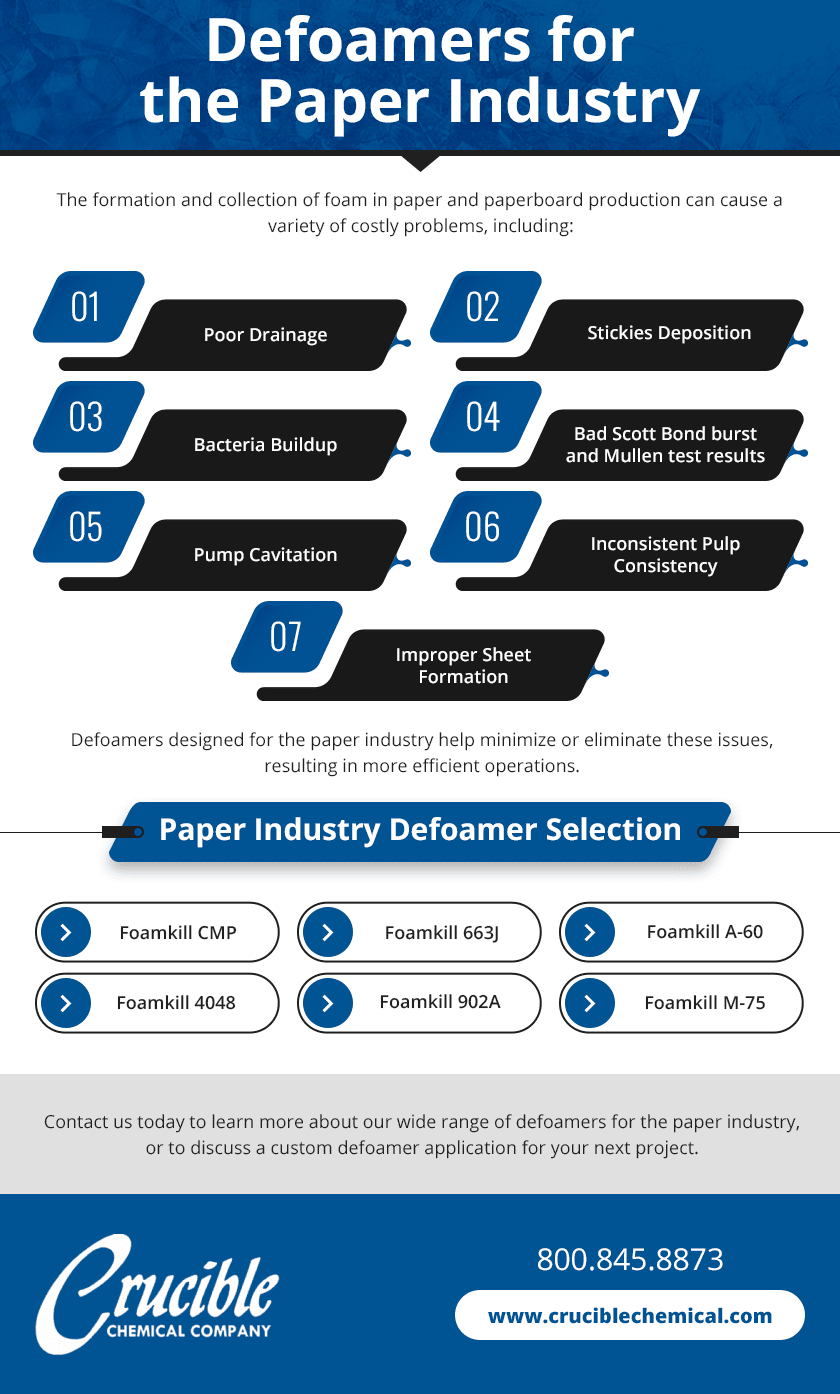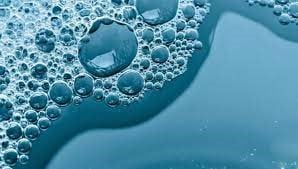How Defoamers Enhance Efficiency in Manufacturing and Production
How Defoamers Enhance Efficiency in Manufacturing and Production
Blog Article
The Duty of Defoamers in Enhancing Product Top Quality and Performance
In numerous making procedures, the existence of foam can significantly prevent product high quality and functional performance. Defoamers work as necessary additives that mitigate this concern, ensuring smoother production process while enhancing the functional and visual characteristics of the end products (defoamers). Their application spans a multitude of markets, from food and drink to drugs, where uniformity and dependability are paramount. The selection of the appropriate defoamer can be crucial to accomplishing optimal results, increasing important inquiries about formulation compatibility and efficiency metrics that merit additional expedition.
Understanding Defoamers
Recognizing the function of defoamers is necessary for preserving product high quality throughout numerous markets. Defoamers are chemical ingredients created to stop the formation and decrease of foam in fluid systems, which can adversely affect processes such as blending, filling up, and surface tension. Lathering can cause inefficiencies, product defects, and endangered aesthetic appeal, making defoamers an essential component in producing operations.
In industrial applications, defoamers help to boost item consistency and security. In the paint and finishings industry, foam can interfere with the application process and the last surface. In food and beverage production, extreme foam can hinder bottling and packaging effectiveness. The effective usage of defoamers not just makes certain smoother production procedures but likewise contributes to premium item efficiency.
Additionally, the selection and formula of a defoamer need to straighten with details application demands, such as compatibility with various other components, performance under varying temperature level and pH problems, and prospective regulative restrictions. Eventually, comprehending defoamers' features and their importance in different formulas is crucial for optimizing manufacturing and ensuring the best quality end items.
Kinds of Defoamers
Defoamers can be categorized right into a number of types based upon their structure and mechanism of activity. The key types consist of silicone-based, non-silicone organic, and inorganic defoamers.
Silicone-based defoamers are among one of the most effective, primarily as a result of their ability to spread promptly on the fluid surface area and disrupt foam development. Their distinct chemical framework enables superior security, making them appropriate for high-temperature applications and environments with varying pH degrees.
Non-silicone organic defoamers, typically composed of natural oils or fatty acids, are valued for their biodegradability and lower poisoning. These are normally used in food and drink applications where security and environmental influence are critical.
Inorganic defoamers, which consist of substances like talc or calcium carbonate, act by increasing the density of the liquid, consequently minimizing foam stability. They are typically made use of in industrial processes where compatibility with other products is not a problem.
Each sort of defoamer has distinct benefits and limitations, enabling customized services depending on the certain foaming issues run into in numerous applications. Comprehending these differences is critical for maximizing performance and attaining wanted item quality.
Applications Across Industries
Countless sectors leverage defoamers to improve item quality and operational performance. In the food and drink market, defoamers are crucial in procedures such as brewing and dairy products manufacturing to avoid foam development, which can bring about inadequacies and product inconsistency. By controlling foam, makers can ensure much better yield and an extra consistent item.
In the pharmaceutical sector, defoamers play a vital role weblink in the formula of liquid drugs, where extreme foam can impede mixing and accurate dosing. Their use assists keep the stability of the formulas and promotes smoother production processes.
The paint and finishings sector likewise depends on defoamers to boost the efficiency of items during application. By minimizing foam, these additives make sure a smoother coating and improve the aesthetic high qualities of the final item.

Benefits of Making Use Of Defoamers
While the application of defoamers varies throughout industries, their advantages regularly boost item top quality and procedure performance. One substantial benefit is the decrease of foam development throughout making procedures, which can otherwise lead to manufacturing delays and variances in product high quality. By minimizing foam, defoamers allow a smoother circulation of products, promoting a lot more effective procedures and minimizing the possibility of tools breakdowns.
In addition, using defoamers can improve the look and texture of final products. In markets such as finishes, paints, and food handling, too much foam can endanger the visual aesthetics and overall high quality, while the ideal defoamer application guarantees a consistent coating and preferable qualities. Check Out Your URL Defoamers can add to cost savings by lowering waste during manufacturing and enhancing the usage of raw materials.

Selecting the Right Defoamer
Picking the appropriate defoamer is critical for maximizing manufacturing procedures and making sure item high quality. The choice of defoamer affects not only the efficiency of foam control but additionally the general performance qualities of the end product. Factors to think about consist of the type of application, the chemistry of the formulation, and the ecological conditions under which the item will certainly be made use of.
Various industries might need particular defoamer kinds, such as silicone-based, natural, or polymeric defoamers. Comprehending the compatibility of the defoamer with the main active ingredients is important to prevent damaging responses that might jeopardize product honesty. Furthermore, the defoamer's performance in various temperature levels and pH levels must be assessed to make certain regular performance.
Evaluating the defoamer in small applications can offer valuable insights right into its performance and my explanation viability. Consideration of regulative compliance, specifically in food, drugs, and cosmetics, is paramount in selecting a defoamer. Eventually, an extensive assessment of these variables will cause the choice of a defoamer that not only controls foam efficiently yet likewise enhances the quality and performance of the final product.
Verdict

In conclusion, defoamers are essential ingredients that dramatically improve item quality and performance across different sectors. The strategic option and application of defoamers lead to set you back financial savings, enhanced resource usage, and increased consumer satisfaction.
Foaming can lead to ineffectiveness, item issues, and jeopardized visual charm, making defoamers a vital component in producing operations.

Report this page